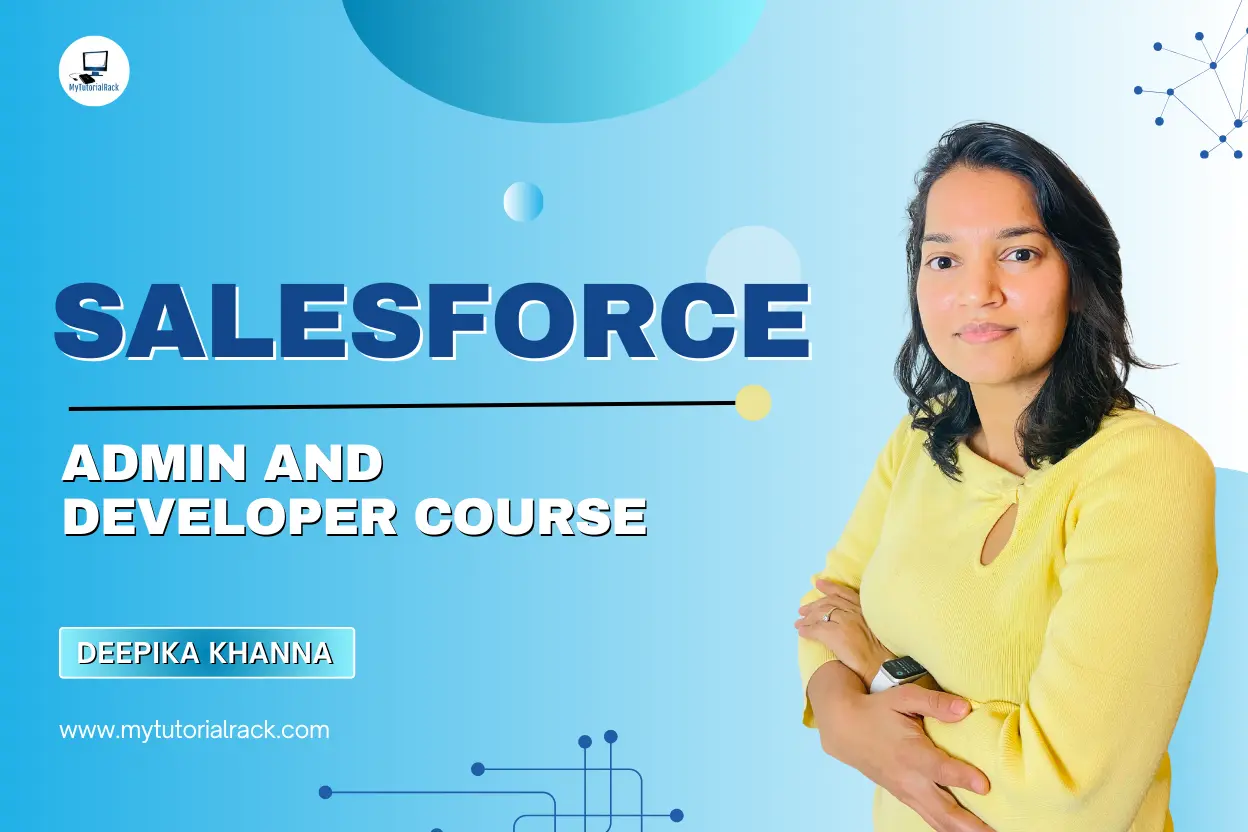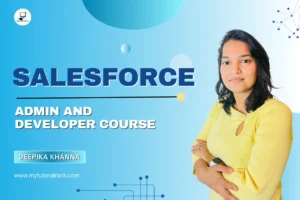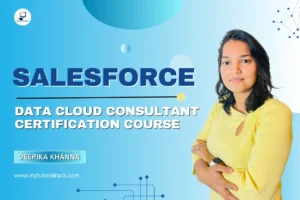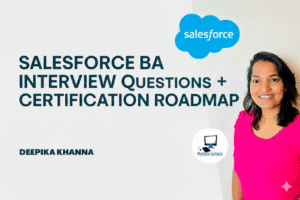Salesforce Admin and Developer Course teaches you admin skills, flows, and coding for real-world business solutions. Become job-ready fast!
By the end of this guide, you’ll have a crystal-clear, step-by-step roadmap to go from zero to certified Salesforce Admin and Developer—without chasing shiny things or falling into overwhelm traps.
Many people start their Salesforce journey full of excitement but quickly feel overwhelmed—bouncing between admin modules, Apex basics, and endless Trailhead trails, unsure what to focus on next.
The key isn’t doing more; it’s following a clear roadmap, practicing in a sandbox, and building skills step by step. With the right approach, landing that first admin role and growing into advanced certifications becomes a structured, achievable path.
The results are clear: faster learning, higher retention, real-world readiness—not just passing an exam.
Imagine confidently designing automations, deploying code, and handling integrations—without ghosting at your keyboard in confusion.
You’re about to learn exactly how to master both the Salesforce Admin and Salesforce Developer paths—one clear, actionable step at a time.
| Take the next step in your Salesforce Admin and Developer journey — visit MyTutorialRack.com now. |
Table of Contents
ToggleStep #1: Build a Rock-Solid Foundation
Too many beginners rush straight into Flow Builder or Apex, thinking they’ll become a pro overnight. But skipping the basics is like trying to build a skyscraper on sand—it just won’t hold. The result? Confusion, wasted time, and mistakes that take hours to fix.
The solution?
Slow down and start with the fundamentals. Understand Salesforce as a platform—not just a random collection of tools and features. Once you know how the core pieces fit together, everything else becomes easier (and way more fun).
Core Topics You Must Cover
In the Salesforce Admin and Developer Course, before you touch automation or code, master these pillars:
- Objects, Relationships, and Data Model
Learn how standard and custom objects work together. Understand lookup and master-detail relationships, because your entire app design depends on them. - Security: Profiles, Roles, and Permission Sets
Security isn’t “extra.” It’s baked into every project. Get comfortable with profiles, roles, and permission sets to control access the right way. - UI & Navigation (Lightning Experience)
Salesforce Lightning can feel like a maze at first. Spend some time navigating, customizing tabs, and exploring list views. You’ll thank yourself later. - Org Setup & Global Options
Explore company settings, currencies, and global search settings. These little things make you feel at home in your org.
Get Hands-On From Day One
Here’s the game-changer: sign up for your free Developer Org on Day 1. This is your personal playground.
Take an hour to explore:
- The Object Manager
- Record Types
- Page Layouts
And here’s the tricky part: don’t just click through modules on Trailhead and call it a day. Build something. Even a small project—like a mock Accounts app with custom objects and relationships—will cement your learning much faster than flashcards or notes ever could.
Why This Foundation Matters
When you invest time in these fundamentals, everything else clicks:
- Flows start to make sense.
- Apex code isn’t intimidating.
- You can troubleshoot issues confidently.
This solid foundation is exactly what we teach step by step in our Salesforce Admin and Developer Course. It’s designed to help beginners quickly understand how Salesforce works in the real world—without feeling overwhelmed.

Credits: cdn.shopaccino.com
Step #2: Become a Salesforce Admin Power User
You can’t build powerful automations or custom apps if you don’t fully understand the users, their pain points, and the business workflows you’re supporting.
Too many new admins jump straight into Process Builder or Flow without understanding the “why” behind what they’re building. That leads to messy setups, constant rework, and frustrated teams.
If you want to become the go-to Salesforce admin in your organization, you need to think like a problem-solver—not just a “button-clicker.”
Shift Your Mindset: From Setup to Solutions
Instead of memorizing setup screens or following random tutorials, start asking the right questions:
- “How do I auto-assign tasks when a lead status changes?”
- “How do I restrict sensitive data between the Sales and Support teams?”
- “What’s the best way to automate approval notifications?”
When you start with real business problems, you’ll design smarter solutions that actually deliver value. That’s what separates a beginner from a Salesforce admin power user.
Master the Right Tools
As you level up, focus on mastering the tools that matter most in Salesforce admin training:
- Flow Builder – For building clean, scalable automations that replace manual work.
- Process Builder – Still useful for certain legacy automations, but flows are the future.
- Reports & Dashboards – For translating raw data into actionable insights, your stakeholders will love.
- Validation Rules – For maintaining clean, reliable data.

Credits: fiverr-res.cloudinary.com
Pro Tip: Spend extra time with Salesforce Flow. It’s the backbone of modern admin automation and a skill that can dramatically increase your career value.
Practice in Your Sandbox — Every Day
During or before the Salesforce Admin and Developer Course, reading about automation is one thing. Actually building automations is where the real learning happens.
Here’s a simple exercise to get started:
- Pick one workflow in your org that feels manual or repetitive.
- Recreate it in your developer sandbox.
- Test it from end to end until it works flawlessly.
- Document what you did and why—it’s great for future reference (and for impressing interviewers).
By practicing this way, you’ll naturally start thinking like a consultant who solves problems—not just an admin who follows directions.
Think Business First, Clicks Second
Every time you build something, pause and ask yourself:
“What problem am I actually solving here?”
This simple habit keeps your solutions clean, efficient, and genuinely helpful to your team. It also builds trust with your stakeholders because they’ll see you as someone who understands their needs, not just the technical side of Salesforce.
As A Salesforce Admin and Developer (What Companies Are Looking For In You)
Building this skill set early sets you apart in the job market. Companies don’t just want admins—they want problem-solvers who can translate business requirements into seamless Salesforce experiences.
And when you pair these skills with advanced topics like Apex programming or API integrations, you’ll be ready to transition from Salesforce admin to Salesforce developer with confidence.
For a guided, step-by-step path to building these skills, check out our Salesforce Admin and Developer Course. It’s designed to help you master both the fundamentals and advanced workflows through practical, real-world projects.

Credits: cloudiate
Resources & Tools Section
To stay on track and work efficiently, use these tools:
- Trailhead: Free, comprehensive modules for both Admin and Developer tracks.
- Trailmix beginner-to-advanced developer roadmap: A curated path for dev skills
- GeeksforGeeks Salesforce Developer Roadmap: Clear outline of developer journey steps.
- Notion or Trello: Track your progress, mock projects, and credentials in a visual board format.
- Checklist to follow:
- Complete Admin basics in Developer Org
- Build at least three automations
- Write simple Apex triggers (e.g., populate a field)
- Build test classes achieving >75% code coverage (required for deployment)
- Complete Admin basics in Developer Org
Conclusion / Next Steps
You’ve now got a clear, actionable roadmap—from mastering the core Salesforce admin skills to stepping confidently into the developer world.
And this isn’t just theory or “nice-to-know” content. This is your career accelerator. By putting these steps into action, you’re not just learning how to pass certifications—you’re learning how to solve real-world problems, design scalable business solutions, and become the person teams rely on when something needs to get done.
Here’s why this matters:
- You’ll have skills that employers actively search for, making interviews and client calls a chance to showcase your expertise.
- You’ll stop second-guessing yourself and start building with confidence, whether it’s an automation flow, a custom app, or a complex integration.
- You’ll future-proof your career by aligning with Salesforce’s fastest-growing technologies.
Take the Next Step with Us
If you’re serious about becoming a Salesforce expert, don’t go at it alone. Our Salesforce Admin and Developer Course is designed to take you from absolute beginner to confident problem-solver with real-world projects, step-by-step guidance, and the latest Salesforce updates baked in.
Think of it as your shortcut to clarity. Instead of wasting time piecing together random tutorials, you’ll follow a proven system that has already helped thousands of learners build their skills and land better opportunities. Your journey starts now. Click, enroll, and start building your future in Salesforce—one project at a time.
| Already building your Admin and Developer skills? The next step is to explore advanced roles. Start with our Salesforce Data Cloud Consultant Certification Course and learn how to manage data streams, profiles, and real-time insights like a pro. |






